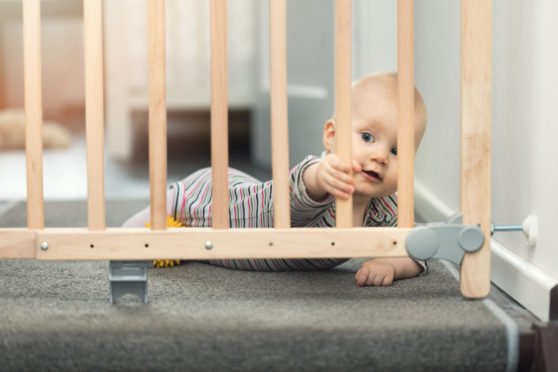
Eight stair gates sold in the UK have failed safety testing by a consumer group, exposing a “serious risk” for young children.
Which? tested a total of 12 stair gates to check they conformed to EU safety standards. Two of the tests, known as the impact resistance test and the fatigue test, are designed to establish the risk of them being dislodged by children rattling, shoving or kicking them.
One stair gate, the Mothercare Wooden Wall Fix, failed the two dislodging tests and has now been withdrawn from sale.
The same stair gate, as well as the Cuggl Wooden Extending gate, withstood just one impact before they failed. The Cuggl Auto Close failed after just two impacts.
The Lindam Sure Shut Orto, the Dreambaby Chelsea and the Dreambaby Liberty, the BabyDan Perfect Close and the Mothercare Wooden Wall Fix all failed the fatigue test, designed to mimic the actions of a toddler or child shaking and rattling the gate over time.
However Which? found that the BabyDan Perfect Close and the Dreambaby Chelsea and Dreambaby Liberty both passed the test when they were secured to the wall using screws as well as adhesive pads.
Which? is advising people with these safety gates to secure theirs in this way if possible, and to stop using it if not.
The watchdog urged parents to immediately stop using all of the other stair gates that failed its testing, adding that it believed they should be withdrawn from sale.
It is the second time in less than a year that Which? has discovered safety issues with stair gates. In October 2018 it found that three stair gates failed the fatigue test.
Which? is reporting its latest findings to Trading Standards and the Office for Product Safety and Standards (OPSS).
Natalie Hitchins, Which? head of home products and services, said: “It’s deeply concerning that so many stair gates have failed our testing. The safety of children should be the number one priority, but too many are being put at an unacceptable level of risk.
“Manufacturers must take these results seriously and recall the products if they cannot guarantee their safety.”
Mothercare said: “The safety of our customers and their children is our highest priority so, as a precaution, we have removed the stair gate from sale while we conduct further investigations and independent testing.
“We would like to reassure our customers that the stair gate complies with the required safety regulations and has passed all safety testing – BS EN 1930:2011. Which? have refused to share the full report and tests conducted in order that we can fully investigate the findings.”
Cuggl told Which?: “All our products have to meet high safety standards and are regularly tested. No issues with these products have been identified but we are investigating these results with our supplier.”

Enjoy the convenience of having The Sunday Post delivered as a digital ePaper straight to your smartphone, tablet or computer.
Subscribe for only £5.49 a month and enjoy all the benefits of the printed paper as a digital replica.
Subscribe